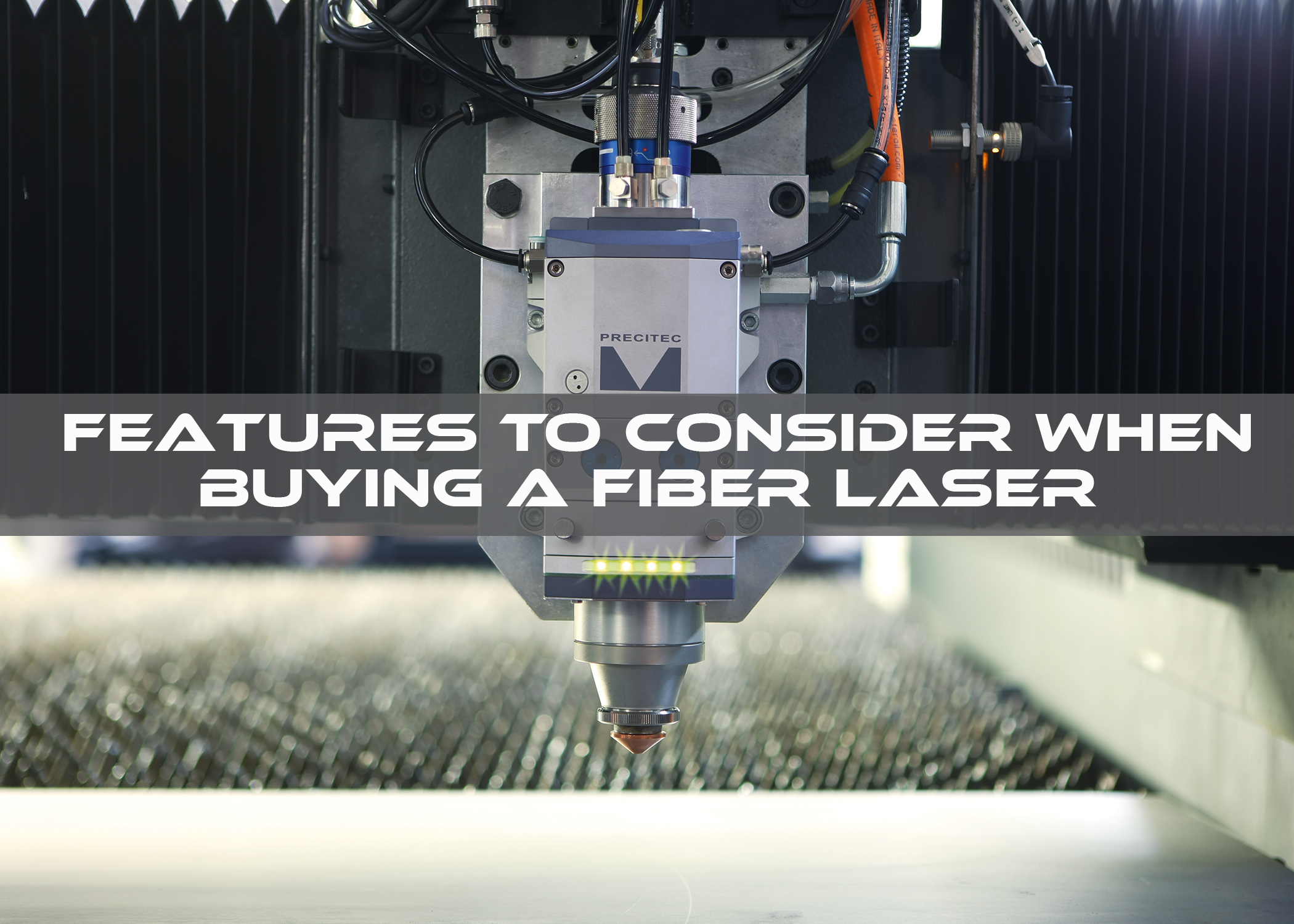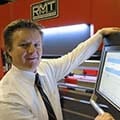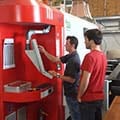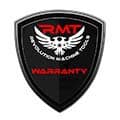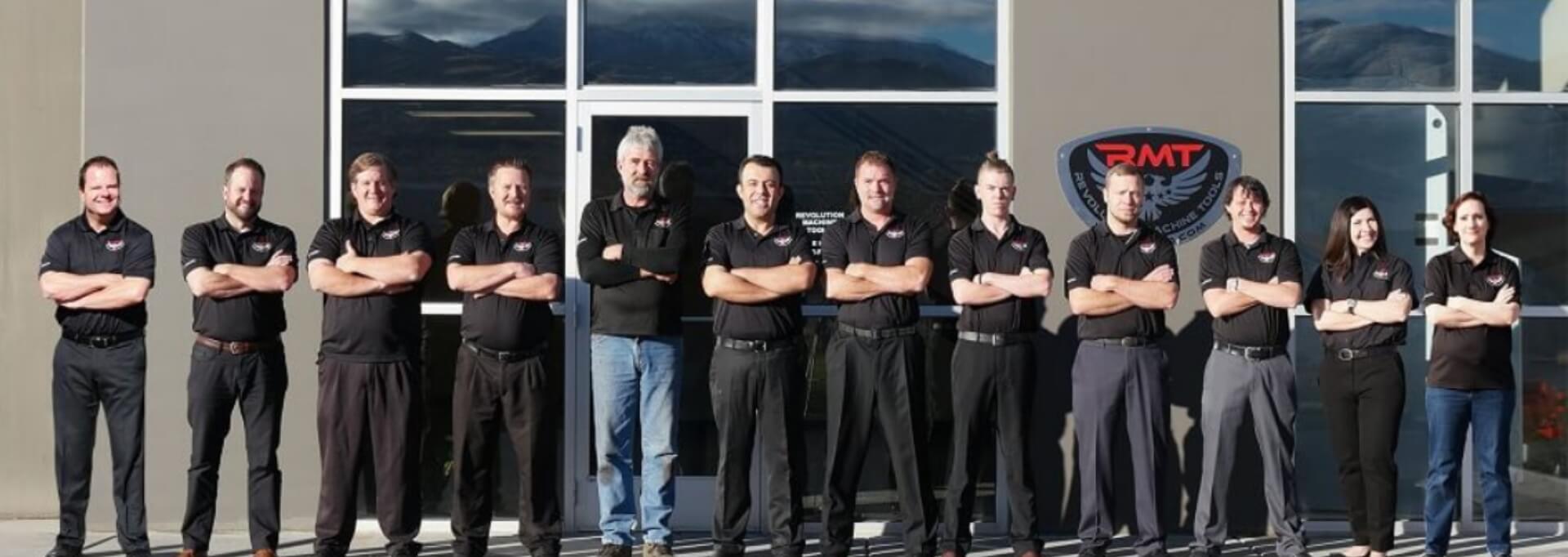Fiber lasers have become a dominant tool across industries for cutting, engraving, welding, and marking due to their high precision, efficiency, and low maintenance needs. Whether you’re a manufacturer, a small business owner, or a hobbyist, choosing the right fiber laser can significantly impact the quality and profitability of your operations. With a wide range of machines available, it’s crucial to understand which features matter most to make an informed purchase.
The following characteristics are some of the key specs to examine when buying a metal-cutting fiber laser machine.
Laser Power (Wattage)
The power of a fiber laser, typically measured in watts (W), determines its cutting or marking capabilities. Higher wattages provide deeper cuts and faster processing speeds but come at a higher cost.
- 20W–50W — Best suited for engraving and marking metals and plastics.
- 100W–500W — Suitable for thin metal cutting and deeper engraving.
- 1kW–12kW+ — Ideal for industrial-scale cutting of thick metals like stainless steel and aluminum.
Note: plan to match the laser power to your typical workload. Overinvesting in wattage can be wasteful if your tasks don’t require it.
Wavelength and Beam Quality
Fiber lasers operate at a wavelength around 1064 nm, which is particularly effective for processing metals such as steel, aluminum, brass, and copper. What sets machines apart is beam quality, often described by the M² value. A lower M² (close to 1) means better focus and higher precision.
Good beam quality leads to:
- Cleaner cuts and marks
- Higher accuracy in fine detail work
- Better energy efficiency
Work Area (Bed Size)
The work area determines the size of materials you can process. Common bed sizes range from 4″ x 4″ (100mm x 100mm) for compact engravers to 50″ x 100″ (1300mm x 2500mm) or larger for industrial cutters.
Choose a bed size based on:
- Your material dimensions
- Batch processing needs
- Floor space constraints
Note: larger work areas increase versatility but also the overall footprint and cost.
Cooling System
Fiber lasers generate heat, especially at higher wattages. Proper cooling ensures consistent performance and prolongs machine life.
- Air-cooled systems — Suitable for low-power machines (under 100W). Quiet, compact, and low maintenance.
- Water-cooled systems — Required for high-power lasers. Offer better thermal management, especially for extended or heavy-duty use.
Ensure the system includes sensors or alarms to prevent overheating and protect sensitive components.
Controller and Software Compatibility
The controller is the brain of your fiber laser. It determines the precision, responsiveness, and ease of use of the machine. Additionally, the software it runs should be compatible with your design tools and support a range of file types (such as DXF, AI, SVG, BMP).
Top-tier systems offer:
- Real-time monitoring and adjustment
- Advanced nesting for material efficiency
- Integration with CAD/CAM tools
Be sure to look for popular, well-supported software platforms like EzCad, LightBurn (for marking), or RADAN (for cutting).
Automation and Integration Features
If you’re running a production facility, automation can save substantial time and labor.
Consider features such as:
- Automatic focus adjustment
- Material loading/unloading systems
- Rotary attachments for cylindrical objects
- Camera preview and positioning
These features enhance productivity and reduce the learning curve, especially for novice operators.
Build Quality and Frame Design
A well-constructed fiber laser ensures long-term reliability and stable performance.
The machine frame should be:
- Rigid and vibration-resistant — Reduces movement for better accuracy
- Corrosion-resistant — Especially important in humid or industrial environments
- Ergonomically designed — Makes operation and maintenance easier
CNC-machined parts and heavy-duty aluminum or steel frames typically offer better durability than lighter, bolted designs.
Laser Source Brand
The laser source is the heart of the machine. Top-tier fiber lasers use high-quality sources from reputable manufacturers.
Trusted brands include:
- Precitec (Germany) — Innovator in the field of high-performance laser processing optics and heads
- IPG Photonics (USA) — Widely recognized for reliability and performance
- MAX Photonics (China) — A popular mid-range choice for cost-conscious fabricators
The source determines not only power but also pulse frequency, lifespan, and maintenance needs.
Safety Features
Fiber lasers emit powerful and potentially hazardous light. Safety features are non-negotiable, especially in commercial environments.
Look for:
- Fully enclosed housing with safety interlocks
- Emergency stop buttons
- Eye-safe viewing windows with protective filters
- CE/FDA certifications
Proper ventilation or fume extraction systems are also critical when cutting plastics or coated metals that emit toxic fumes.
Support, Warranty, and Training
Buying a fiber laser isn’t just a one-time purchase—it’s an investment that requires after-sales support.
Consider:
- Warranty length — Ideally, 1–3 years minimum
- Replacement parts — Are they readily available?
- Technical support — Is it available locally? How responsive is the team?
- On-site or remote training — Especially valuable for first-time users
Vendors that offer onboarding, documentation, and video tutorials will save you countless hours of trial and error.
Maintenance Requirements
One of the advantages of fiber lasers over CO₂ lasers is their low maintenance. However, routine care is still necessary.
Evaluate:
- How easy it is to clean or replace lenses and nozzles
- Whether the machine has self-diagnostic features
- The lifespan of the laser source (typically 50,000–100,000 hours)
Some machines also include predictive maintenance alerts or logs that notify you when service is due.
Cost vs. Value
Price is a major factor, but the cheapest option is rarely the best value.
Assess the total cost of ownership, which includes:
- Initial purchase
- Maintenance and repairs
- Software licenses
- Downtime or inefficiency from poor quality
It’s often better to invest a bit more upfront for a machine that offers reliability, better parts, and local service.
Select a Trusted Partner Company from Which to Purchase
When considering your fiber laser purchase, who is selling is as important a question as who did the manufacturing. Do you have a regular source for your press brakes, plate rolls, and other fabrication machinery purchases? If so, check with them first to see if they offer or recommend any specific brands (and why). If you trust them for your other purchases, the odds are that they may also offer other lines or types of equipment worth considering.
Always ask for demos, read reviews, talk to other owners, and never hesitate to contact the manufacturer with questions. A bit of upfront research can make all the difference in long-term satisfaction and success.
Choosing the right fiber laser can supercharge your productivity, open new business opportunities, and deliver high-quality results for years to come.



